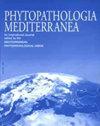月桂花成虫对白锈病的抗性
IF 1.9
3区 农林科学
Q2 AGRONOMY
引用次数: 1
摘要
野生植物产生大量的种子和幼苗,但大多数在成熟前就死亡了,而这些过早死亡通常是由病原体引起的。抵抗力的主要基因保护一些幼苗或幼崽。这些被选中的个体可以成为一个有抵抗力的成熟群体。或者,植物可以表现出成熟的、成体的植物抗性。这两种解释在野外可能无法区分,因为自然病理系统中的流行病定期发生,导致每年都会选择抗性。这项研究包括对一种两年生植物的多年观察,在这些观察中可以进行区分。Lunaria annua是一种原产于地中海盆地的致病系统,它在美国爱达荷州的引入范围内需要一段时间才能产生流行病。在经历了多年的最小白锈之后,2017年发生了一次流行病,第一年的幼株的sorus密度是第二年的成年株的20倍。由于在2017年之前的几年里,白锈病的发病率一直很低,2017年成年植株比2017年幼株的抗性更大,这可能是由于成年植株的抗性。这也可能是由于酚学:成年植物有成熟的叶子,正在开花和成熟的种子,当幼植物的叶子上开始形成白锈时。青少年与成年人的差异在2018年保持不变。在白色水泡锈病中,成年植物将遗传给下一代的无症状感染频率也会使耐药性的解释变得复杂。然而,在我们对爱达荷州人群的采样中,我们没有发现无症状的一年生L.annua种子感染。本文章由计算机程序翻译,如有差异,请以英文原文为准。
Adult plant resistance to white rust in Lunaria annua
Wild plants produce abundant seeds and seedlings, but most die before reaching maturity, and these premature deaths are often caused by pathogens. Major genes for resistance protect some seedlings or juveniles. These selected individuals can become a resistant, mature cohort. Alternatively, plants can exhibit mature, adult plant resistance. These two explanations can be indistinguishable in the field, when epidemics in natural pathosystems occur regularly resulting in annual selection for resistance. This study included multi-year observations of a biennial plant where the distinction could be made. White rust of Lunaria annua, a pathosystem native to the Mediterranean Basin, took time in its introduced range in Idaho, USA, to generate epidemics. After years of minimal white rust, an epidemic occurred in 2017 in which first-year, juvenile plants had 20 times the sorus density of second-year, adult plants. Since white rust incidence had been minimal for years prior to 2017, the greater resistance of 2017 adults over 2017 juveniles may have been due to adult-plant resistance. This could also be due to phenology: adult plants have mature leaves, and are flowering and maturing seed, by the time that white rust begins to build up on leaves of juveniles. The juvenile-adult difference was maintained in 2018. In white blister rusts, interpretation of resistance can also be complicated by the frequency of asymptomatic infections that adult plants would pass on to the next generation. However, we found no asymptomatic infection of seeds of L. annua in our sampling of the Idaho population.
求助全文
通过发布文献求助,成功后即可免费获取论文全文。
去求助
来源期刊

Phytopathologia Mediterranea
生物-植物科学
CiteScore
4.40
自引率
8.30%
发文量
28
审稿时长
6-12 weeks
期刊介绍:
Phytopathologia Mediterranea is an international journal edited by the Mediterranean Phytopathological Union. The journal’s mission is the promotion of plant health for Mediterranean crops, climate and regions, safe food production, and the transfer of new knowledge on plant diseases and their sustainable management.
The journal deals with all areas of plant pathology, including etiology, epidemiology, disease control, biochemical and physiological aspects, and utilization of molecular technologies. All types of plant pathogens are covered, including fungi, oomycetes, nematodes, protozoa, bacteria, phytoplasmas, viruses, and viroids. The journal also gives a special attention to research on mycotoxins, biological and integrated management of plant diseases, and the use of natural substances in disease and weed control. The journal focuses on pathology of Mediterranean crops grown throughout the world.
The Editorial Board of Phytopathologia Mediterranea has recently been reorganised, under two Editors-in-Chief and with an increased number of editors.
 求助内容:
求助内容: 应助结果提醒方式:
应助结果提醒方式:


